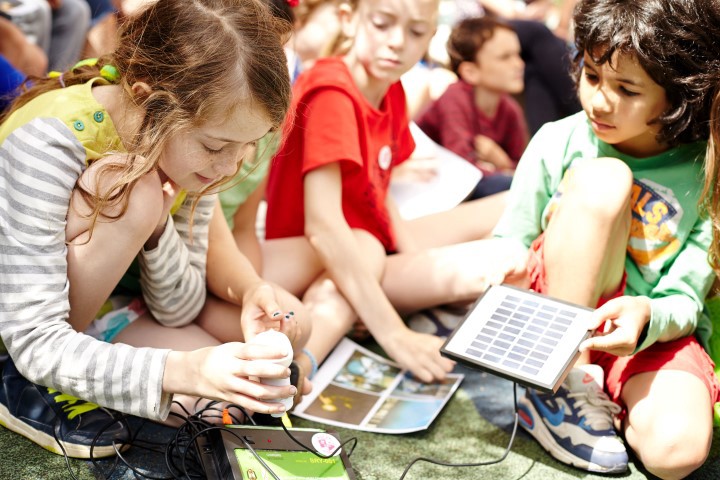

School roofs are popular sites to place solar panels; so-called “rent-a-roof” schemes often make use of them. But these can treat the school itself a bit passively. Schools are more than buildings and energy-suppliers–they are communities filled with learning. The Solar Schools campaign identified this, and tries to tap into the power of schools as a whole.
When campaigners at carbon-cutting group 10:10 visited a school with some solar panels they were struck by how powerful the implementation had been in revitalizing the school’s attitude toward energy and climate change. They wanted to develop the concept and expand it to other schools.
A community crowdfunding model seemed the obvious way to go for raising funds to purchase solar panels. It would not only ask the community around the school to raise funds, but it would also–they hoped–spread awareness and a sense of ownership in the process. Investing in energy doesn’t have to be exclusive to oil barons. Neither does it have to be just about giving money.
“For lots of people, they’ll never be in a position to invest. It’s just not on the table for them,” said Amy Cameron, campaign manager for community crowdfunding at 10:10. “But the crowdfunding donation model we run means lots people can be part of it, in whatever way, if they bake some cake for a sale, or go to a quiz night “¦ They’d give time, they’d give money, they could shout about it on social media.”
Cameron and her team piloted the project during the 2011″”12 school year, starting with just eight schools, and launched nationally at the start of the following academic year. They took on 15 new schools this year, for a total of 65 Solar Schools over the four years the project has been running. One of the advantages of solar PV is that it’s modular, so fundraising targets can be adapted to fit each school.
10:10 soon learned how powerful the social hub of a school could be. “We probably underestimated the need for offline action,” Cameron shared, reflecting on lessons from the pilot stage. “We envisioned the website would be the main focus of fundraising, but actually the offline activity was much more important–in terms of fundraising, but also generating interest, feeling involved.”
They also realized that the Solar Schools project could offer a focus for strengthening all that community action. “One of the benefits of the project, which wasn’t what it set out to achieve, was the way it brings communities together, strengthens relationships, and forges new ones, within towns, between people, and business and different organizations,” Cameron said.
“Getting a solar panel on the school is really great, obviously,” she added. But what really excites Cameron is how the initiatives inspire people to become more involved in community projects, and grow skills and confidence that might be used elsewhere. “One of the things we’ve been really struck by is how great it’s been for developing local leaders and local actions,” she said.
“That wasn’t what we set out to do. We thought the act of donating was a way of getting people excited about renewable energy–and I think that’s true, we have seen that–but what’s more exciting is creating these little hubs of people, networks of people, who are like, “‘Yeah, we can do big, exciting stuff.’ That’s my favorite thing about it,” said Cameron.
10:10 has seen other groups take up the idea, internationally as well as in the United Kingdom. In the United States, the Natural Resources Defense Council’s similar Solar Schools program cites this U.K. project as a key inspiration. Cameron said her group has ideas to extend beyond schools, too: “Really the essence of the idea just requires a building and a community of people who care,” she said.


How We Get To Next was a magazine that explored the future of science, technology, and culture from 2014 to 2019. This article is part of our Power Up section, which looks at the future of electricity and energy. Click the logo to read more.
